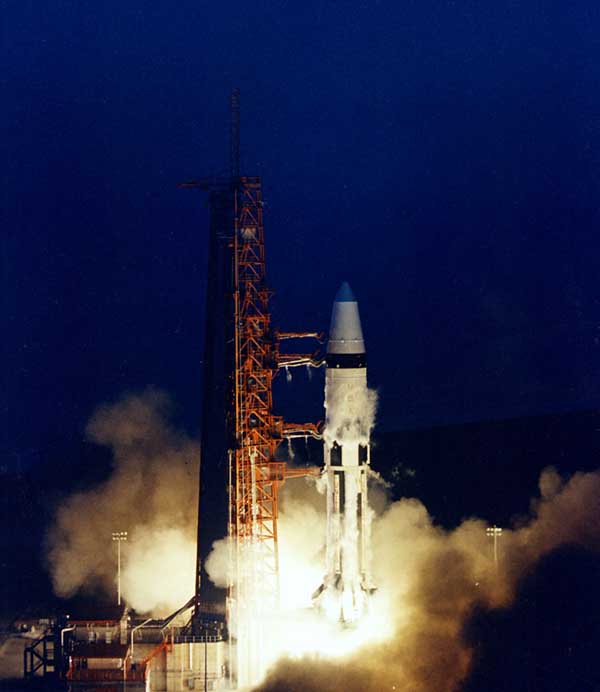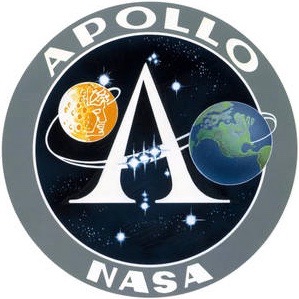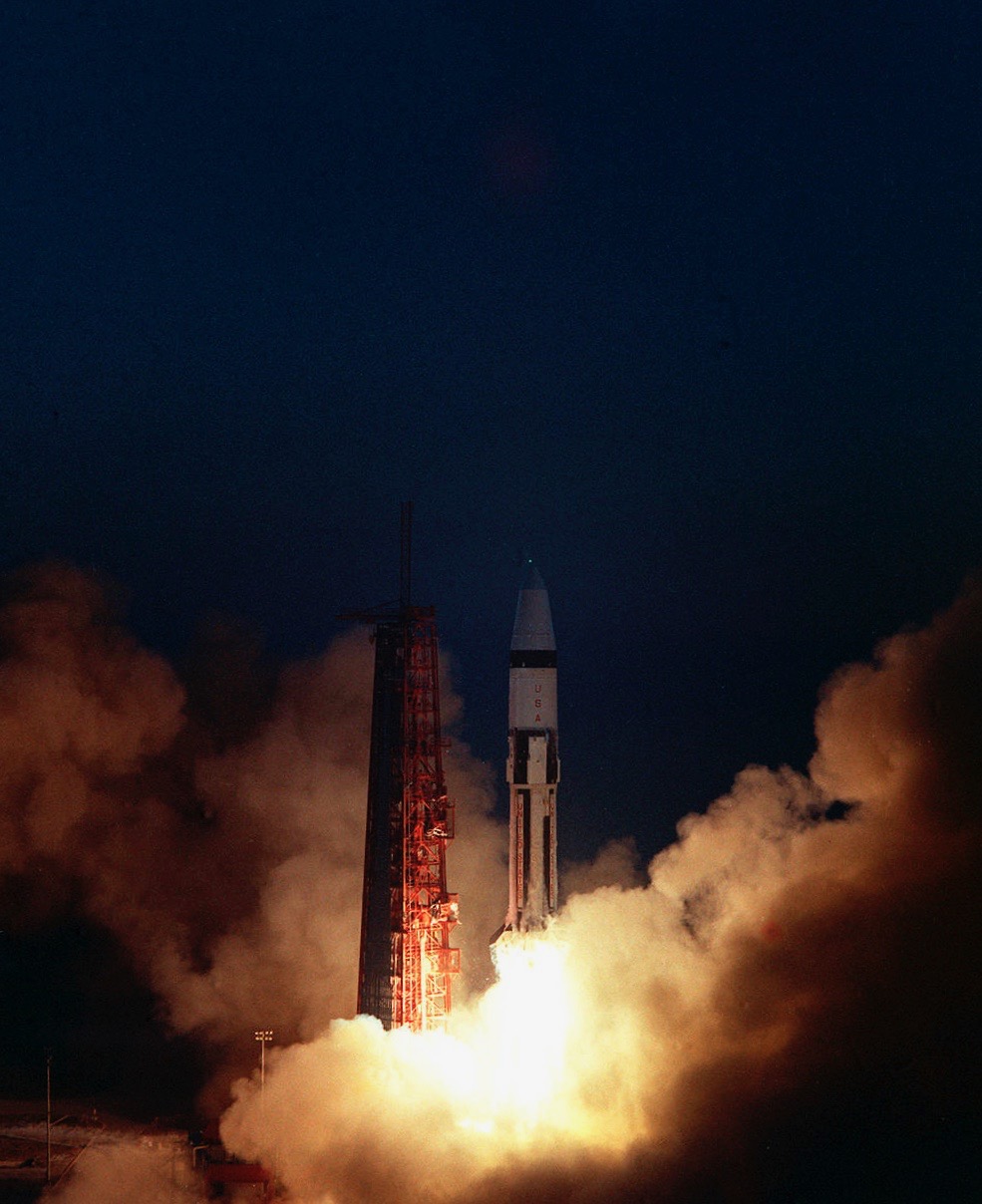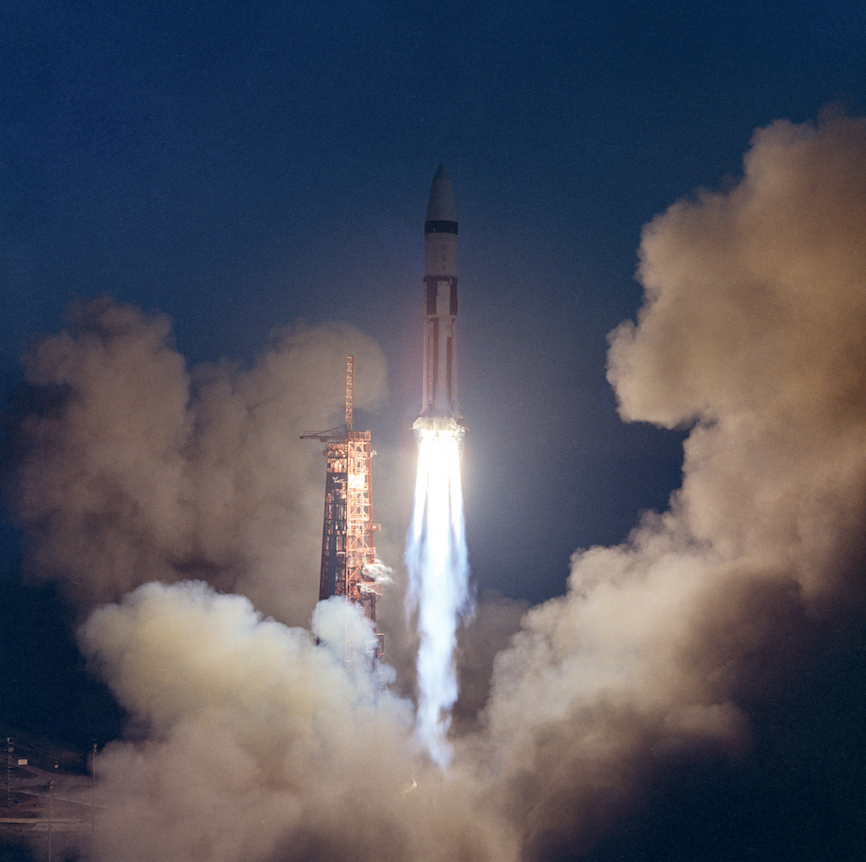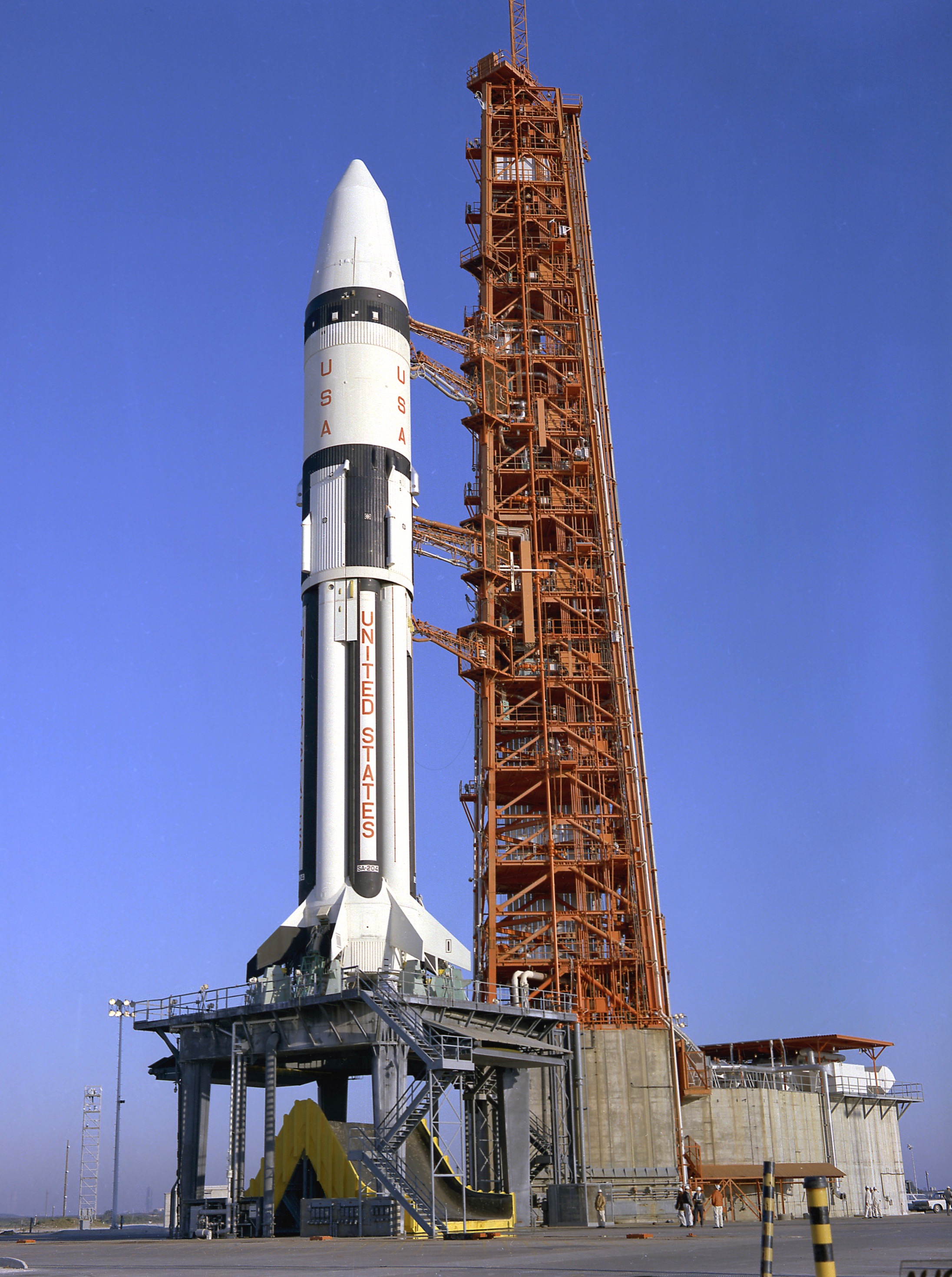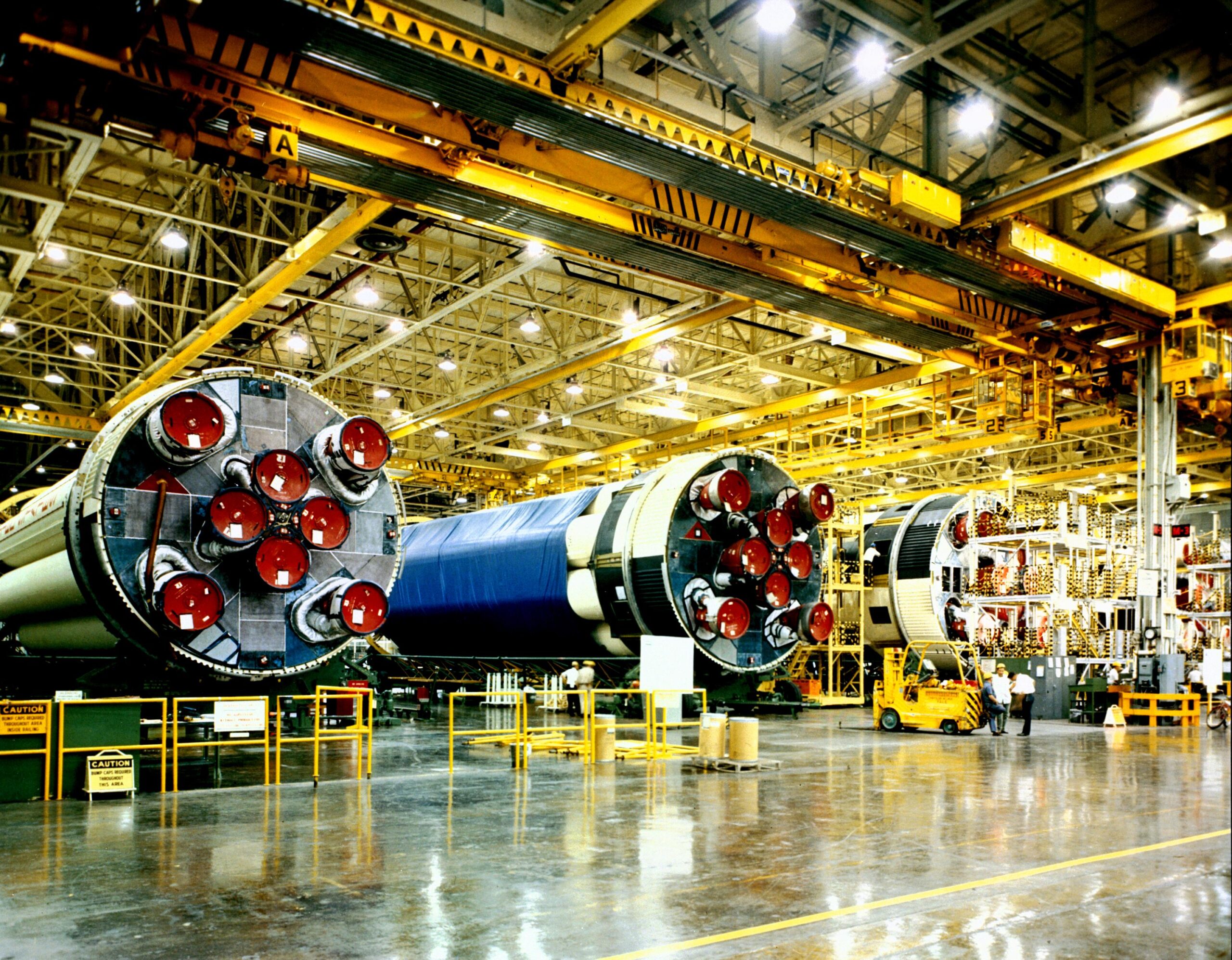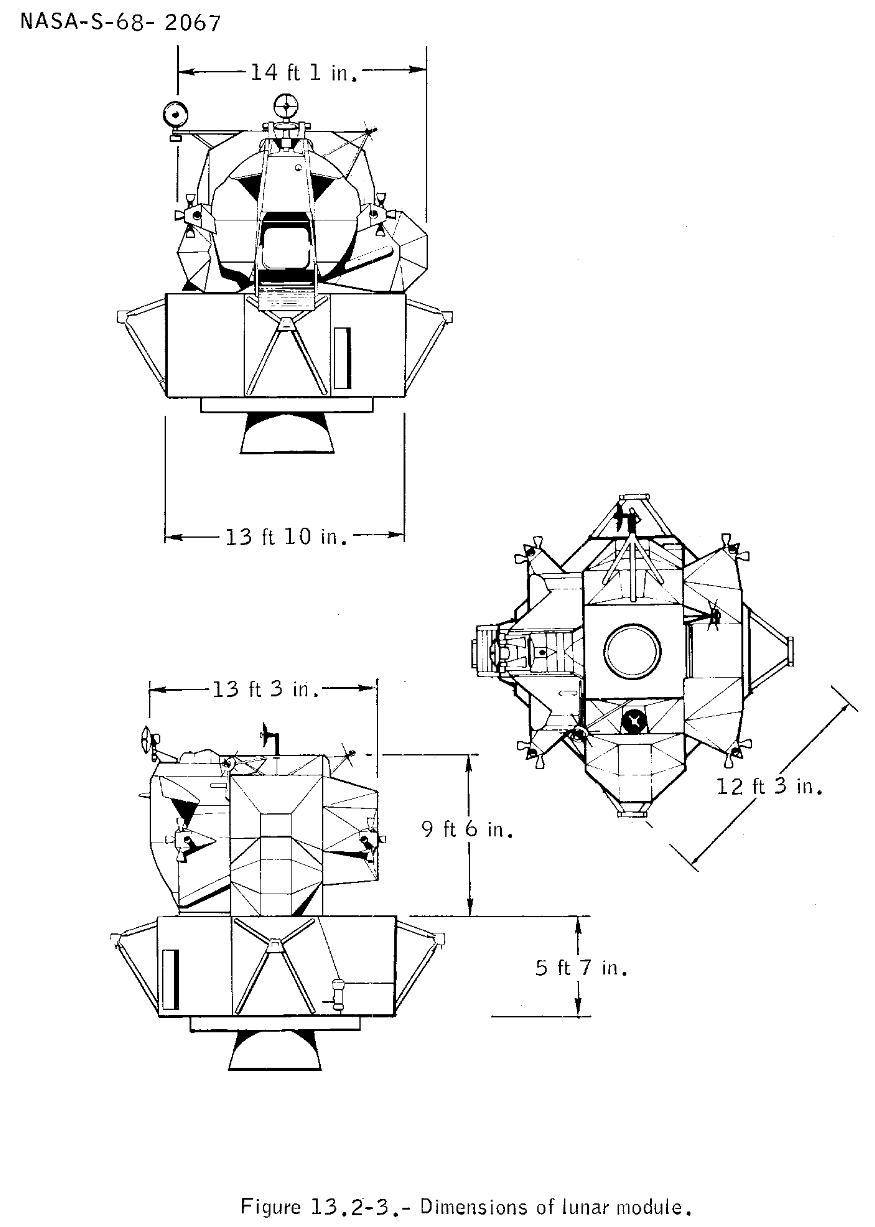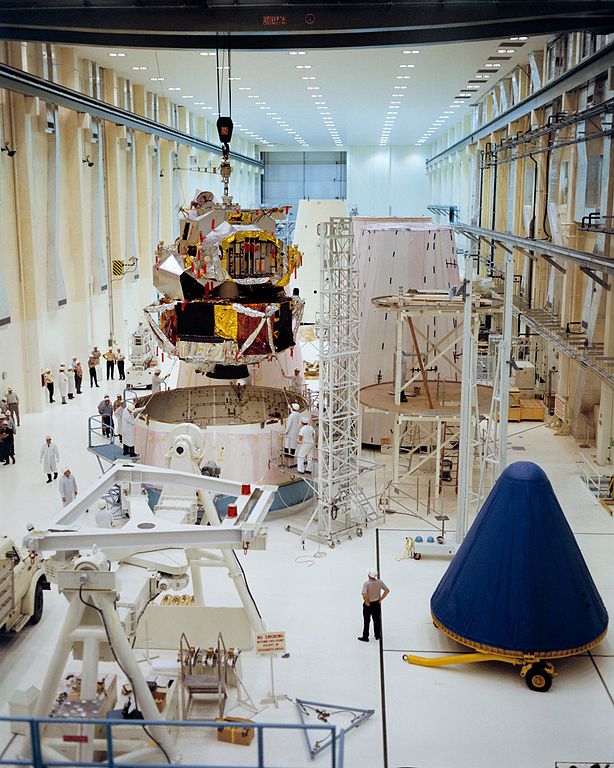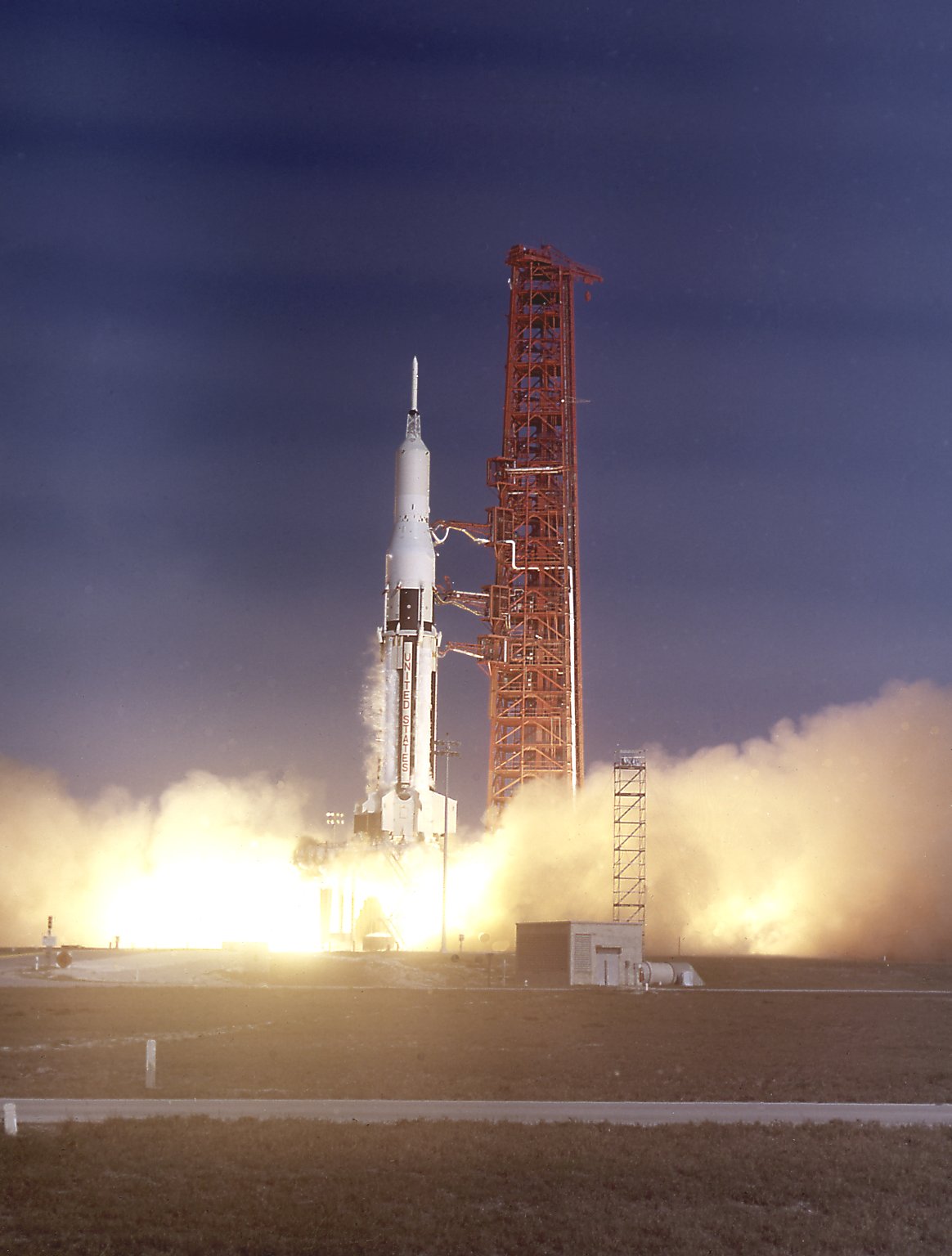
16 February 1965: At 9:37:03 a.m., Eastern Standard Time (14:37:03 UTC), Pegasus A (later redesignated Pegasus I), a satellite designed to detect meteoroid impacts in Earth orbit, is launched from Launch Complex 37B at the Cape Kennedy Air Force Station, Cape Kennedy, Florida, aboard a Saturn I Block II launch vehicle. The satellite is enclosed in a boiler plate Apollo Command and Service Module.
The all-up vehicle is designated AS-103. The combined first and second stage launch vehicle is designated SA-9. It consisted of an S-I first stage (S-I-9) and S-IV second stage (S-IV-9). The boilerplate Apollo CSM is identified as BP-16.
The three Pegasus satellites were the only ones to use a Saturn launch vehicle. Pegasus A was the largest satellite launched up to that date, with a mass of 1,451.5 kilograms (3,200 pounds).
This was the eighth flight of a Saturn I rocket, and the fourth for a Saturn IV second stage.
AS-103 lifted off from a 47 foot × 47 foot (14.33 × 14.33 meters) square metal pedestal. At the center of the pedestal was a 32-foot diameter dodecagon-shaped opening for the rocket engines’ exhaust. A twin-sloped flame deflector under the pedestal was coated with a concrete-like heat-resistant material to minimize damage to the deflector.
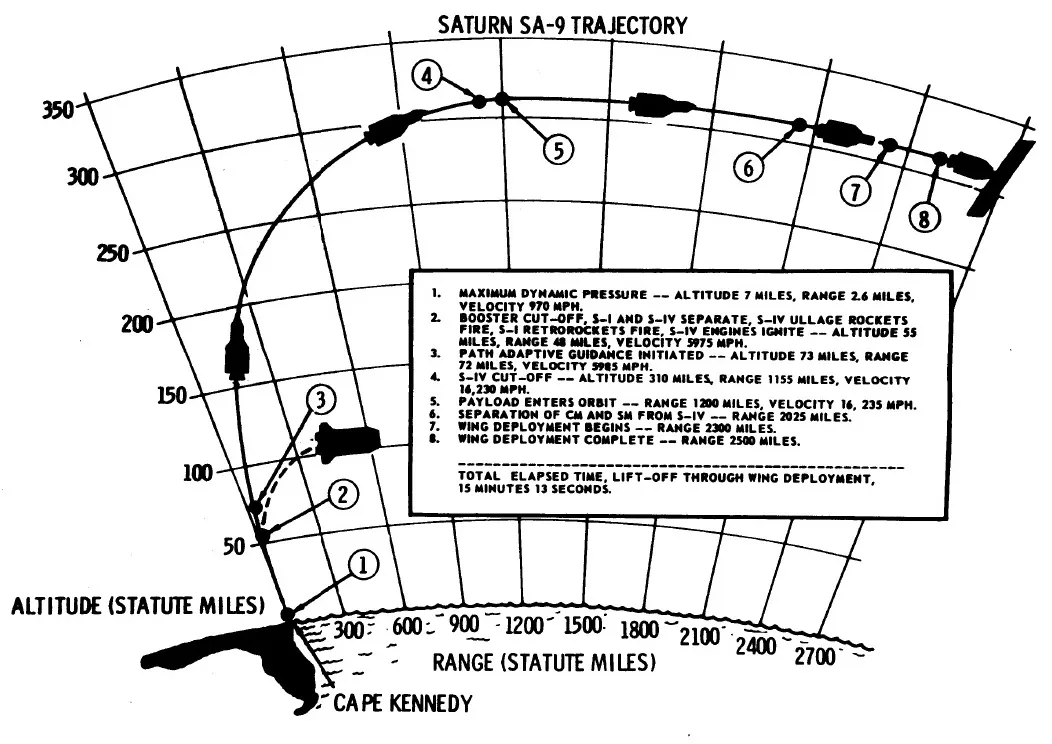
At T+8 seconds, AS-103 began a roll and pitch maneuver, taking it to a flight azimuth of 105°. The roll maneuver ended 15 seconds later. The Saturn I reached Mach 1 at T+54 seconds, and the maximum dynamic pressure (max Q) at T+66. The pitch program was completed at T+138. At T+140.22, the four inboard H-1 engines were cut off (IECO), and the outer engines, 5.34 seconds later (OECO). At this time, AS-103 had reached an altitude of 55 miles (89 kilometers), and was 44 miles (77 kilometers) downrange. It was traveling at 6,000 miles per hour (9,656 kilometers per hour).
The Saturn I first stage was jettisoned. Four solid fuel retro rockets were to slow the first stage, but one malfunctioned shortly after ignition. The first stage impacted the ocean surface at T+718.95, 961.29 kilometers (597.32 miles) down range. (N. 25.8155, W. 71.3491)
At T+148.12, the command to start the six RL10 engines of the second stage was sent. The two stages had separated by 10.95 meters (35.93 feet) at engine ignition. (the minimum requirement was 3 meters/9.8 feet.) Ten seconds later, the Launch Escape System was jettisoned.
After about 8 minutes, at T+631.659, the S-IV-9 engines were cut off and the vehicle was inserted into orbit 1,200 miles, (1,931 kilometers) downrange, with a velocity of 8,091.1 meters per second (29,128 kilometers per hour/18,099 miles per hour).
At T+813, the Command and Service Module was separated, and at T+863.4, the Pegasus wings began to deploy. This took 39.6 seconds. These panels had an overall span of 96 feet (29.261 meters) and width of 14 feet (4.267 meters). They carried 208 detector panels. Each panel was 3 feet, 4 inches × 1 foot, 8 inches × 1 inch (1.016 x 0.508 x 0.0254 meters).
A 50-second video of this evolution can be seen on YouTube at:
Pegasus I stabilized in a 430.00 × 523.00 kilometer (267.19 × 329.33 miles) elliptical orbit with a period of 94.10 minutes. As residual fuel (approximately 700 pounds) from the S-IV second stage, which remained attached to the satellite, vented, Pegasus began to tumble.
Pegasus I had about eighty times the detecting area than the Explorer I satellite, which had been launched 31 January 1958. By late May 1965, more than 70 meteoroid hits had been detected.
NASA issued a contract to build three Pegasus satellites, two for flight and third as a backup, to the Fairchild Stratos Corporation in February 1963. (Fairchild Hiller Corporation after 1964.) Final assembly took place at the Aircraft-Missiles Division, Hagerstown, Maryland. (In fact, all three were launched.) Pegasus A was transported by aircraft and arrived at Cape Kennedy Air Force Station on 20 December 1964.
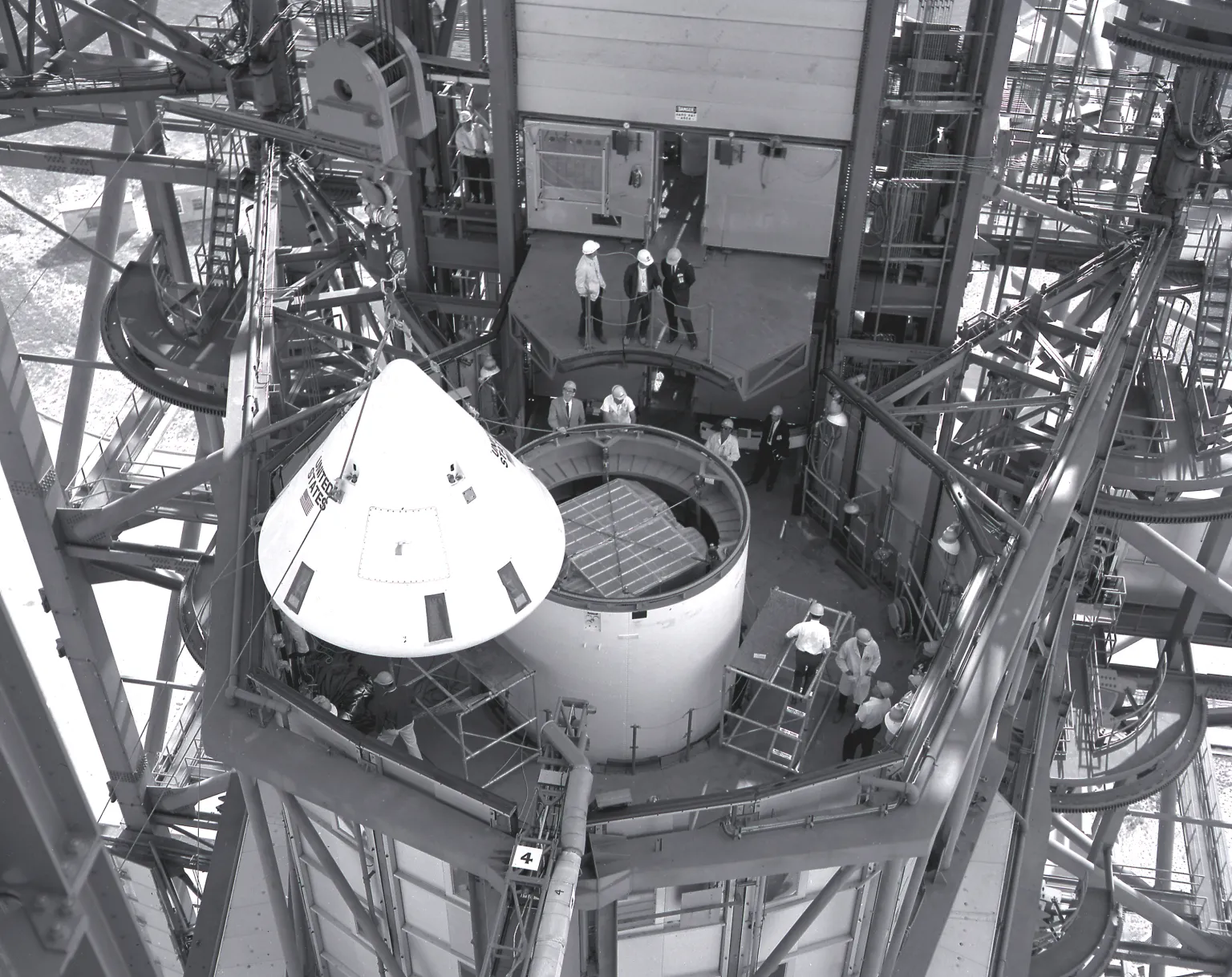
“In this photograph, the Pegasus, meteoroid detection satellite is installed in its specially modified Apollo service module atop the S-IV stage (second stage) of a Saturn I vehicle for the SA-9 mission at Cape Kennedy. Personnel in the service structure moved the boilerplate Apollo command module into place to cap the vehicle. The command and service modules, visible here, were jettisoned into orbit to free the Pegasus for wing deployment. The SA-9 was launched on February 16, 1965.”
(NASA)
When stored inside the boiler plate command and service module, the satellite was 17 feet, 4 inches (5.283 meters) long, 7 feet, 0 inches (2.134 meters) wide, and 9.5 inches (24.13 centimeters) deep.
Pegasus I was deactivated 29 August 1968. Its orbit decayed and it reentered the Earth’s atmosphere 17 September 1978. BP-16, the boilerplate Apollo CSM, remained in orbit until 10 July 1985.
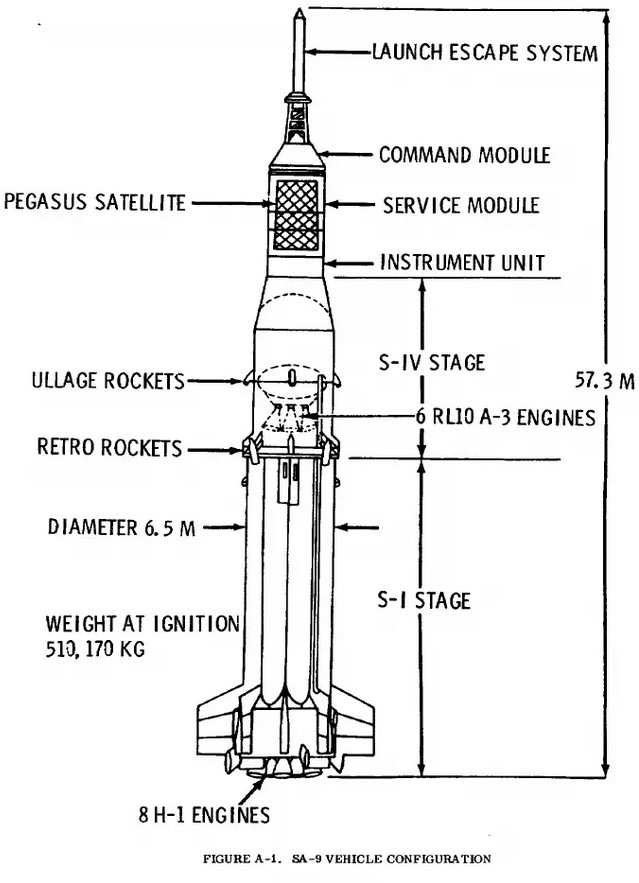
AS-103 consisted of a Saturn I Block II first stage, S-I-9; a S-IV second stage, S-IV-9; a boilerplate Apollo Command and Service Module, BP-16; with a Launch Escape System tower. It had a height of approximately 57.3 meters (187.99 feet). It weighed 1,110,941 pounds (503,914 kilograms) at First Motion, including 878,179 pounds (398,335 kilograms) of propellant.
S-I-9 was the last Saturn S-I first stage to be built at NASA’s Marshall Space Flight Center in Huntsville, Alabama. (SA-8, SA-10, and the following Saturn first stage boosters were produced by the Chrysler Corporation Space Division at NASA’s Michoud Assembly Facility in New Orleans, Louisiana.) The Block II variant was modified for use by the United States Air Force to launch it’s proposed X-20 Dyna-Soar manned orbital vehicle. The most visible modification are the very large fins for enhanced stability, along with four smaller stub fins. These fins extended radially 9 feet (2.7 meters) from the thrust structure, and each had a surface area of 121 square feet (11.24 square meters). S-I-9 was barged to the Cape Kennedy Air Force Station, arriving there 30 October 1964.
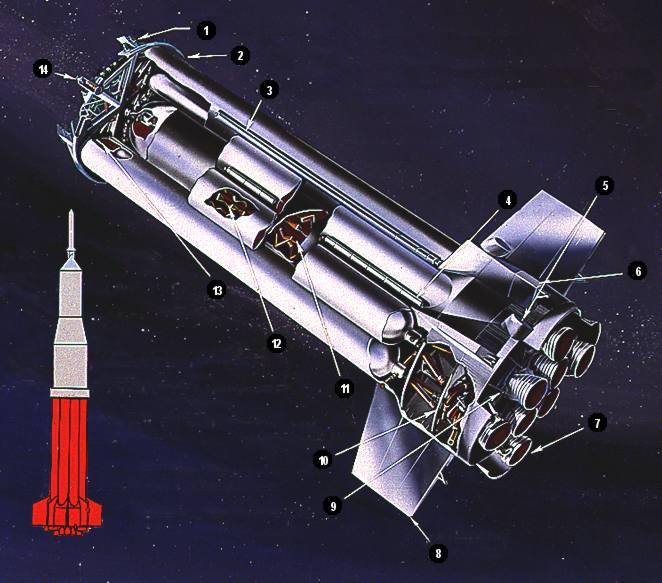
S-I-9 was 80.3 feet (20.275 meters) long and 21.4 feet (6.523 meters) in diameter. Eight Redstone 5 feet, 10 inch (1.778 meters) diameter rocket fuel tanks, with four containing the RP-1 fuel, and four filled with liquid oxygen, surrounded a 8 feet, 9 inch (2.667 meter) diameter Jupiter rocket fuel tank containing liquid oxygen. The stage was powered by eight uprated Rocketdyne H-1 engines. The eight engines produced 1,500,000 pounds of thrust (6,672 kilonewtons) at Sea Level.
The Saturn S-IV-9 second stage was built by the Douglas Aircraft Company’s Missile & Space Division, Huntington, Beach, California. It was 41.5 feet (12.65 meters) long and 18.5 feet (5.64 meters) in diameter and had an empty weight of about 14,000 pounds (6,350 kilograms). It carried 100,386 pounds (45,534 kilograms) of propellant. The stage was powered by six Pratt & Whitney RL10A-3 rocket engines. The six engines produced 88,976 pounds of thrust (395.785 kilonewtons). The stage was coated with a special heat resistant paint developed by the Illinois Institute of Technology, Chicago. The S-IV stage was transported by aircraft and arrived at the Cape Kennedy Air Force Station 23 October 1964.
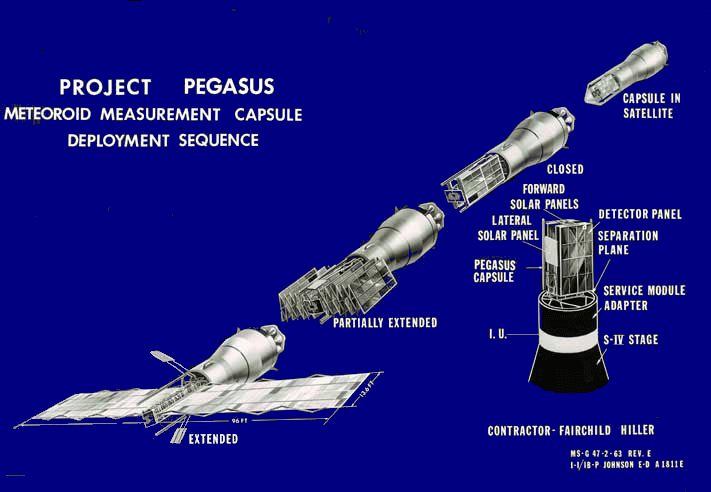
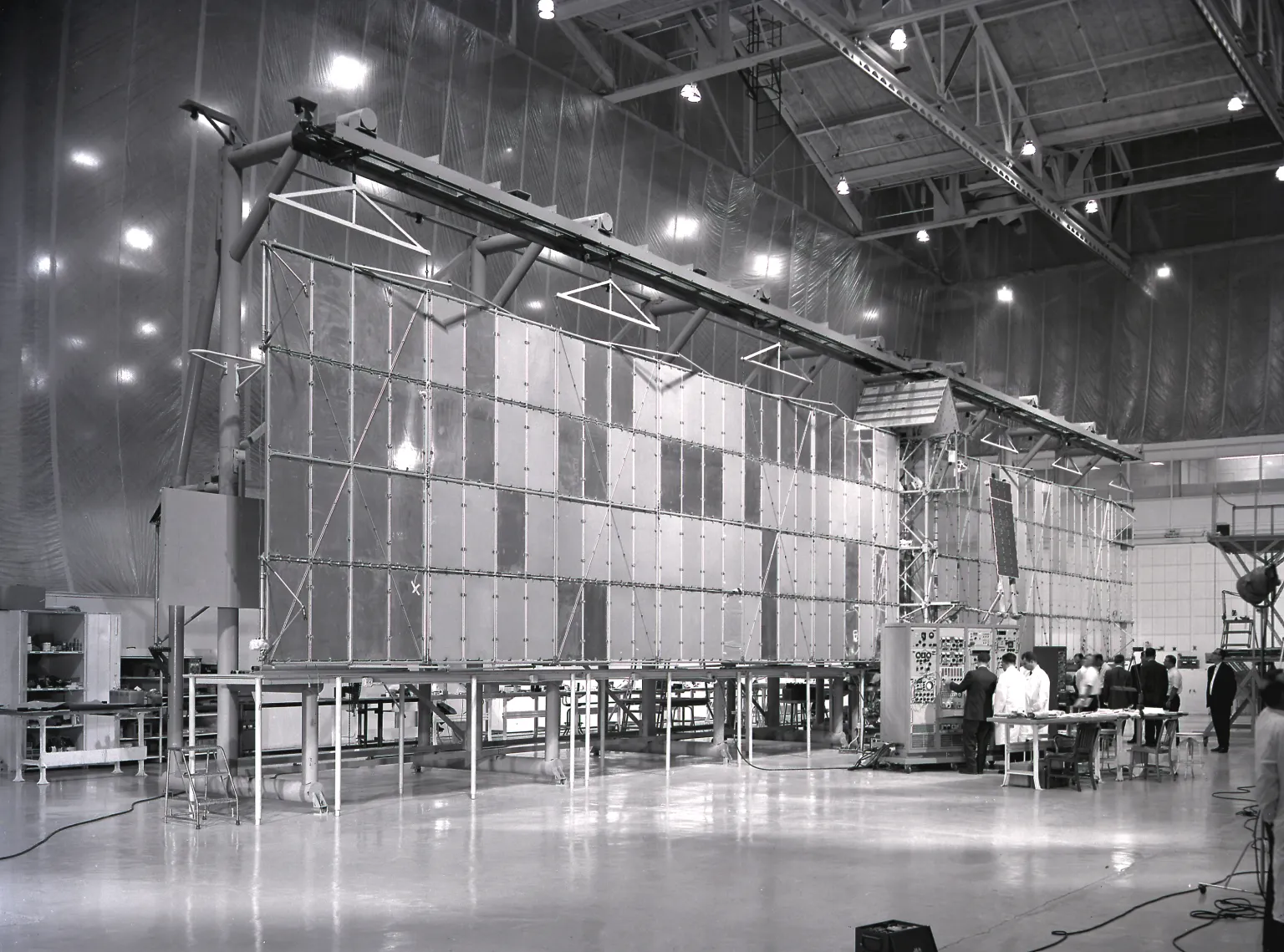
“Fairchild technicians check out the extended Pegasus meteoroid detection surface. The Pegasus was developed by Fairchild Stratos Corporation, Hagerstown, Maryland, for NASA through the Marshall Space Flight Center. After being placed into orbit around the Earth, the satellite unfolded a series of giant panels to form a pair of wings measuring 96 feet across.” (NASA)
NASA considered the Saturn S-I series to be remarkably successful. Up to this time, new rockets failed at a rate of 50% during two to three dozen tests.
© 2024, Bryan R. Swopes
